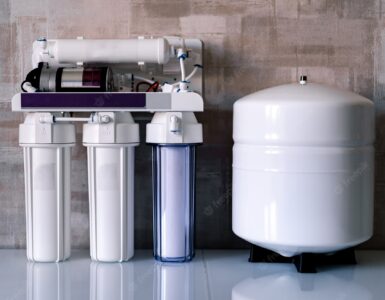Did you know that one in every 50 insured homes is set to file water damage or freezing claim each year?
That might not seem like a lot, but considering the number of homes in the U.S., that number is quite significant. If you’re experiencing flooding, it’s important not to panic. A flooded basement requires many steps to fix, but it’s definitely possible in the end.
Luckily, we’ve laid out everything you need to do to get your basement fixed as soon as possible. Read on to learn more.
Shut Off the Power
Your first step needs to be calling an electrician when your basement is flooded. Then, you should work to shut off power to your basement if the breaker isn’t located where the water is at. Calling in a professional is going to be the best step towards keeping you and your family safe, though.
It’s also best to stay out of this area until a professional shows up to help.
Find the Source
If you can see that the flooding was caused by rainfall or a weather event, make sure you wait until everything passes before starting water damage restoration. If the weather wasn’t the issue, then it’s best to get started on cleanup and finding the cause right away.
Here are a few steps you can take along the way to figure out what may have caused it:
- Check for cracks in the ceiling, walls, and floor
- Check your gutters and downspouts
- Ensure the floor in your basement is level
As you move forward, sharing any relevant information like this with professionals helping out may help them get your home back to normal faster.
Remove the Water
Once you’ve called in the professionals, it’s time to remove the water from your basement. Depending on the amount of water in your basement, you can use a sump pump or a wet/dry vacuum. If the leak was small enough, a mop and bucket might even work.
Assuming the flood was large, you’re going to want to set up a sump pump to remove any standing water that’s remaining. It’s important to make sure you’re wearing protective gear like boots and gloves when you enter your basement to prevent injury and even potential exposure to biohazards.
If there’s enough water, you might have to call in a professional.
Once the majority of the water is out, make sure you remove any valuables, upholstered furniture items, and also electronics before you move forward. Find a dry place they’ll be able to stay until the mess is cleaned up or work to dispose of them.
Call Your Insurance Company
Once you’ve ensured everything is immediately safe, call your insurance company. Homeowner’s and renter’s insurance often covers both these things if you have the proper coverage, and filing a claim caused by inclement weather is usually handled through them.
Make sure the company you’ve hired to help out will work with your insurance company to help things go smoothly. If this isn’t the case, then it’s best to keep your own documentation of everything throughout the process. This is going to ensure everything goes smoothly with your claim.
Dry Out Your Basement
The next step is to call in a professional to help with flooded basement cleanup and deodorization. Most professionals will have the necessary equipment to help with leftover water extraction. They’ll definitely be able to ensure that everything in your basement is dry so you can work to clean up the rest of your belongings.
No matter the damage, it’s important to take this step, so you and anyone else in your household stays safe throughout the cleanup process.
Have Everything Sanitized
Along with drying and deodorizing, sanitizing is an important step to take when you’re cleaning up the basement flooding — especially if it was a sewer issue or other biohazards are present.
Often, this step is done alongside drying and deodorizing, so you’ll be set to go after everything is cleaned up and deemed safe to handle.
These steps are also important to have done quickly so you can get ahead of the risk of potential mold and mildew that results from water damage.
Clean Salvageable Items and Remove Any Old Ones
Once your basement is clean, it’s time to go through the items that you didn’t have the chance to remove initially. Not all floods are necessarily bad enough to deem all your items a lost cause, so it’s important to go through and salvage what you can.
Things like photos, boxes, and storage items might not have been completely dried during the cleanup, so this is your chance to pull everything out and make it’s all taken care of.
Take steps to get rid of what’s not salvageable and preserve anything that is. This process can be an emotional one depending on what you lost, so take it easy and take your time throughout the cleanup.
Take Steps to Protect Your Flooded Basement
Once you have your basement cleaned out, it’s best to take steps to prevent floods in the future. You can do this by checking for cracks in your foundation, checking your gutters and downspouts, so water doesn’t seep in, and even by having regular sewer and septic tank checks. Another way is basement remodeling. This will prevent your basement from being flooded.
Not only can these steps help you get to the bottom of whatever caused your flooded basement, but they can also help you make sure it doesn’t happen again.
For more on the latest in health and marketing, check out the rest of our website.




























